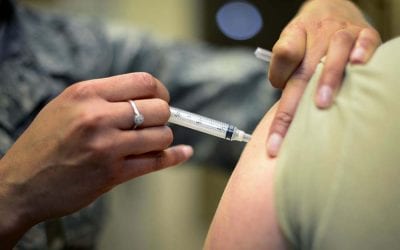In order to permit you to board a plane, TSA prods, pokes, scans, wipes, and “pats.” TSA says it makes you safe. Does it?
In my opinion, not really.
This past week, Cuma Yasar, claiming to have a bomb, tried, but couldn’t get past the cockpit door of a Turkish Airlines plane about to land in Istanbul, Turkey, to hijack it and have it fly to Oslo, Norway. Passengers Firat Faysal Ali, and Dag Gjerstad tackled and subdued Yasar. Did the the reinforced cockpit door and the actions of these passengers make the plane safer?
You bet!
In an effort to make air travel safe and secure, passengers’ checked-in luggage is x-rayed. Passengers must eschew containers of liquids larger than 3 ounces, or pack them in their checked luggage, and can only take a few containers of shampoo, toothpaste, perfume, shaving cream and other liquids and gels in their carry-ons.
Passengers’ carry-ons are x-rayed. Passengers must remove some of the clothing they’re wearing, and have them x-rayed. Passengers pass through one of a variety of scans; magnetic, x-ray, terrahertz. Some passengers are “patted-down,” if you can call it that. Passengers and their carry-ons may be sniffed or wiped. Some passengers get random secondary screening. Some passengers are questioned.
All or most of that sounds reasonable and effective, but is it?
Famed security expert Bruce Schneier calls TSA’s actions and procedures at the airport “Security Theater,” security measures which make people feel secure without actually improving security.
Let’s look at what is TSA theater, and what makes some sense.
• X-raying checked-in luggage is fast, causes no inconvenience and can uncover explosives, but since airfreight in passengers planes has only recently been inspected too, this measure has just become effective. By the way, it’s unclear if all planes coming in from abroad are likewise inspected.
• X-raying carry-ons, computers, and loose clothing was SOP (standard operating procedure) prior to 9/11 and makes sense to continue, so as to discover most weapons entering the airplane cabin.
• Removing clothing makes limited sense as it helps makes simple and easy pat-down searches effective. Removing shoes wouldn’t be necessary if TSA employed effective explosives detection. [Partly Security Theater]
• The stated purpose of full-body scanners is to detect non-metallic weapons and explosives hidden on and in clothing, and passenger’s bodies. Considering the scanners are seriously limited in their effectiveness in carrying out those purposes, they are nothing but security theater. (They cannot detect many explosives taped to the body which could cause a plane to crash, and are unable to detect any explosives secreted in body cavities.) [Security Theater]
• The so-called enhanced pat-down searches of passengers are no more effective than simple pat-down searches, and in my opinion, have only been instituted to encourage passengers to TSA’s ineffective scanners. [Security Theater]
• Simple and enhanced pat-downs are completely ineffective in detecting explosives hidden in body cavities and terrorists don’t need me to tell them that. [Security Theater]
• Wipe downs of passengers and carry-on items for explosive detection works, but it’s extremely time consuming, and generally used by TSA randomly, instead of being targeted. [Security Theater]
• More often than not, secondary searches are due to random choices and result in plenty of senior citizen searches. [Security Theater]
• Explosive sniffing dogs have been occasionally used to detect explosives on passengers and in carry-on items. This method is effective and fast, and generally unused in airports.
• Limiting the amount of liquids and gels brought on planes as carry-on is a bankrupt regulation in my opinion. In a column in 2008, I explained how terrorists working together on a flight could easily circumvent the intent of this regulation. [Security Theater]
• Using intelligent, highly trained agents to observe passengers and question them can be a highly efficient, easy way to ferret out potential problem passengers before they pass through security. Unfortunately this isn’t well done, or often done by TSA.
Reviewing the list above gives one pause when considering if TSA security has implemented methods and regulations which actually enhance our security. It sure seems like it’s mostly security theater to me.
Bruce Schneier has often said, “Only two things have made flying safer [since 9/11]: the reinforcement of cockpit doors, and the fact that passengers know now to resist hijackers.”
History since 9/11 has proved his words both prophetic and true.
Since 9/11 we see three flights on which a terrorist/hijacker tried to either take over the plane or bring it down.
• Soon after 9/11 there was Richard Reid, the shoe bomber. In December, 2001, Reid tried to set of a bomb to bring an American Airlines plane down, but passengers subdued him.
• In December, 2009 there was Umar Farouk Abdulmutallab, the panty bomber. He tried to bring down a Northwest Airlines plane over Detroit with a PETN bomb sewn in his underwear. Passengers led by Jasper Schuringa subdued him before he could do any real damage to the plane.
• Just this past week, hijacker Yasar Cuma was subdued by passengers and was unable to force his plane to Norway.
Mr. Schneier is right, while TSA “plays” at making us safer, passengers have taken matters into their own hands and are making us safer.
After many years working in corporate America as a chemical engineer, executive and eventually CFO of a multinational manufacturer, Ned founded a tech consulting company and later restarted NSL Photography, his photography business. Before entering the corporate world, Ned worked as a Public Health Engineer for the Philadelphia Department of Public Health. As a well known corporate, travel and wildlife photographer, Ned travels the world writing about travel and photography, as well as running photography workshops, seminars and photowalks. Visit Ned’s Photography Blog and Galleries.


